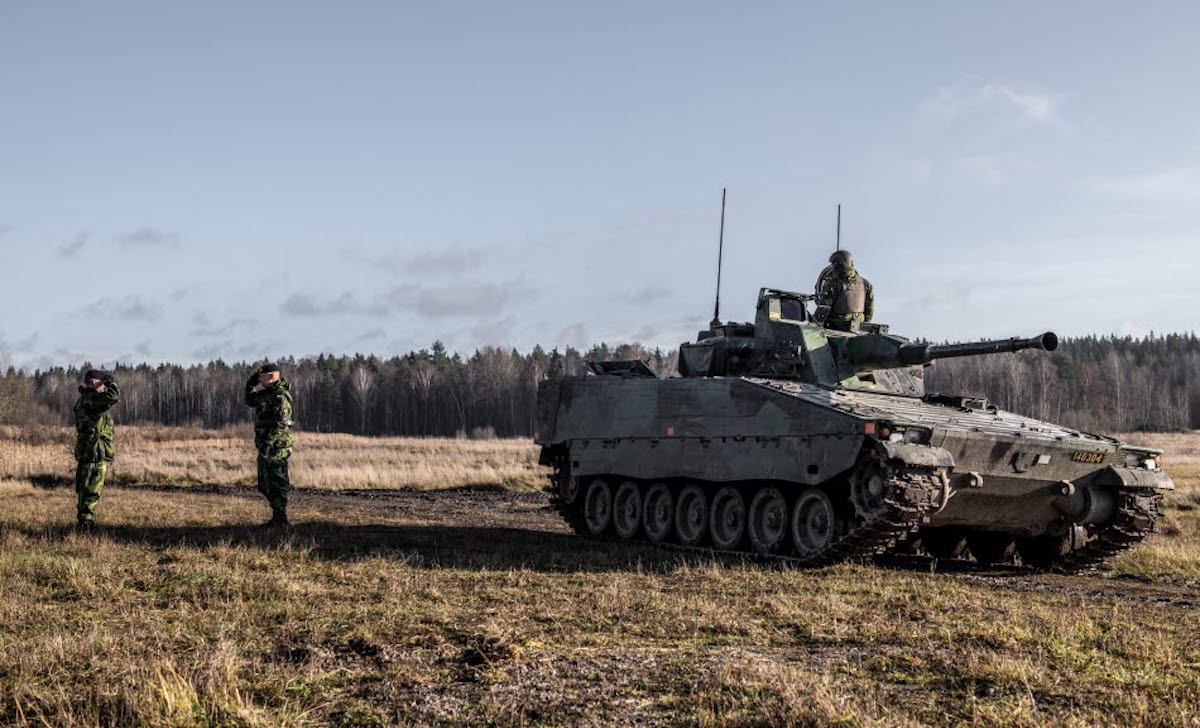Swedish battalion commander: The Swedish Armed Forces cannot cope with the modern battlefield
Sweden's defence has been dismantled since the Cold War. What remains largely follows the same thinking as then, both strategically, tactically and materially. While the modern battlefield has developed at breakneck speed, Sweden seems stuck in yesterday's solutions. So warns Göran Reuterdahl, a former intelligence officer and battalion commander in the navy and national defence forces.
Text by spokesperson Göran Reuterdahl, former intelligence officer and battalion commander in the Navy | This article was previously published in NewsVoice and Epoch Times (behind paywall)
The Ukrainian war has shown that classical military doctrine is dead. War today is no longer about large tank formations, company assaults or air dominance by air forces. Drones, UAVs, missiles/rockets and satellite surveillance have revolutionised the nature of combat.
Both Russia and Ukraine now utilise small, mobile units supported by drone technology. An artillery system, a tank or a gathering of soldiers is detected and engaged almost immediately, regardless of the weather or time of day. Traditional units are simply too vulnerable.
This does not just mean a technological shift, it requires a total re-think of how we think, organise and train our forces. Continuous innovation, tactical adaptability and rapid transfer of experience must become the norm.
Sweden's defence currently consists of two mechanised brigades. By comparison, at the end of the Cold War in 1991, Sweden had 26 brigades. Today's 10,000 soldiers are barely enough to defend half of Gotland.
The Swedish Armed Forces must be restructured from the ground up.
Our equipment is also outdated. The 122 (Leopard) tank, the Archer artillery and other Western systems sent to Ukraine have largely proved ineffective or outright unsuitable on the modern battlefield. The German armoured officer who compared the Leopard 2 in Der Spiegel to something better suited to a parade than to combat was painfully honest.
At the same time, Sweden has invested in the Patriot system, four batteries of around 100 missiles. These are not adapted to meet the kind of massive missile and drone attacks we are now seeing in Ukraine (and Israel), where Russia at times sends up to 700 projectiles per day.
For each incoming threat, 2-4 Patriot missiles are required, an unreasonable ratio both technically and economically. A missile equivalent to Shahed (about 50 kg payload) costs about USD 20 000, while a Patriot missile costs up to USD 4 million. Moreover, Patriot was originally developed to counter aeroplanes, and the system has great difficulty in dealing with missiles that are hypersonic.
The Swedish Armed Forces must be restructured from the ground up:
- Focus on UAVs/drones, missiles (including hypersonic), electronic warfare and information superiority.
- New tactics with small, mobile and decentralised units.
- A highly developed intelligence service with the right skills.
- A defence industry that values innovation over administration.
- An officer corps that promotes entrepreneurship and innovation, not just tradition.
We live in a new era, but with a defence force and security policy thinking from another time. It is high time we asked the hard questions, questioned our assumptions and renewed Sweden's security policy from the ground up, with a mandate from the people.
Text: Göran Reuterdahl, former intelligence officer and battalion commander in the Navy, spokesperson for the Ambition Sverige party
